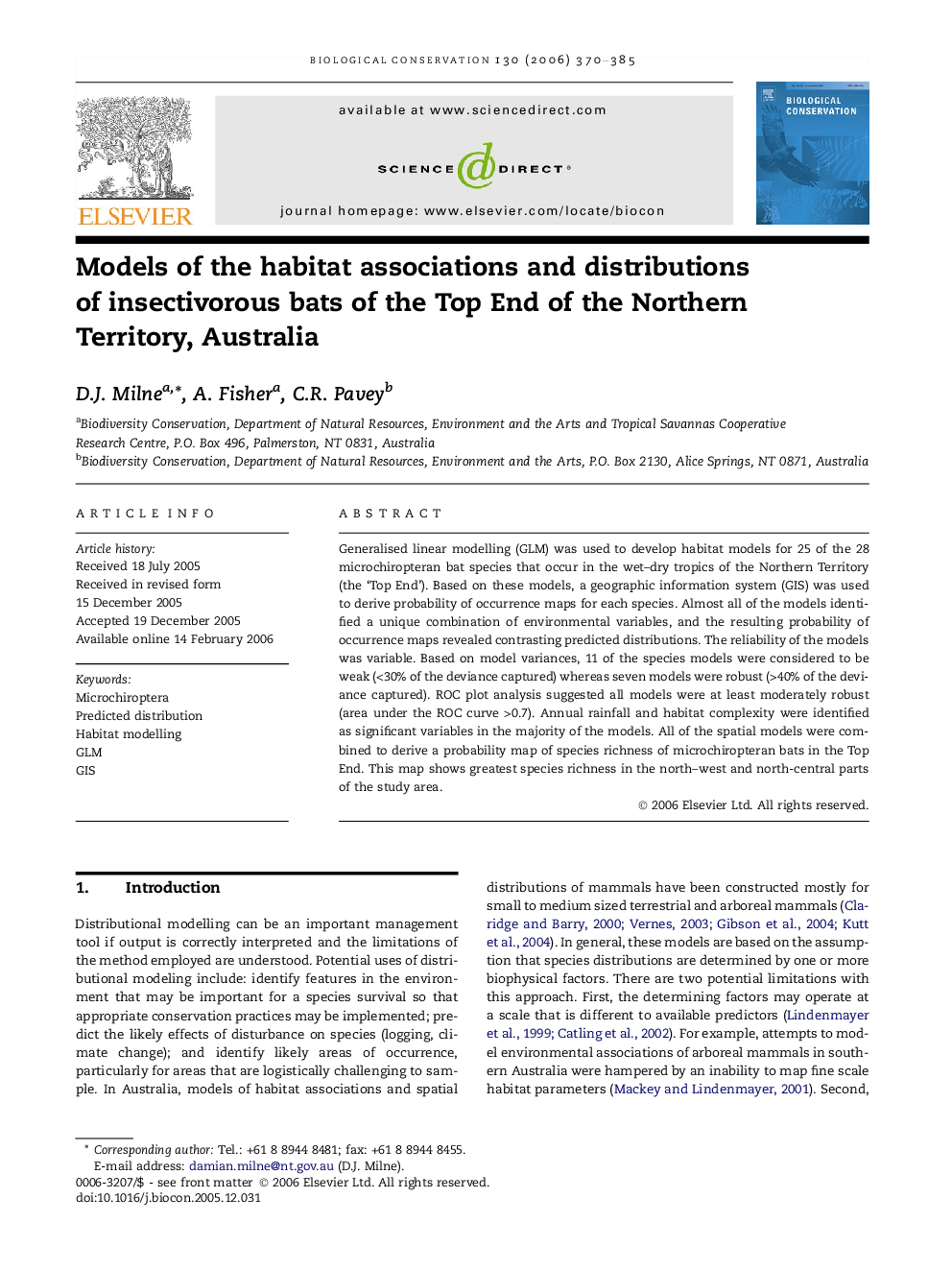| Article ID | Journal | Published Year | Pages | File Type |
|---|---|---|---|---|
| 4387686 | Biological Conservation | 2006 | 16 Pages |
Generalised linear modelling (GLM) was used to develop habitat models for 25 of the 28 microchiropteran bat species that occur in the wet–dry tropics of the Northern Territory (the ‘Top End’). Based on these models, a geographic information system (GIS) was used to derive probability of occurrence maps for each species. Almost all of the models identified a unique combination of environmental variables, and the resulting probability of occurrence maps revealed contrasting predicted distributions. The reliability of the models was variable. Based on model variances, 11 of the species models were considered to be weak (<30% of the deviance captured) whereas seven models were robust (>40% of the deviance captured). ROC plot analysis suggested all models were at least moderately robust (area under the ROC curve >0.7). Annual rainfall and habitat complexity were identified as significant variables in the majority of the models. All of the spatial models were combined to derive a probability map of species richness of microchiropteran bats in the Top End. This map shows greatest species richness in the north–west and north-central parts of the study area.
